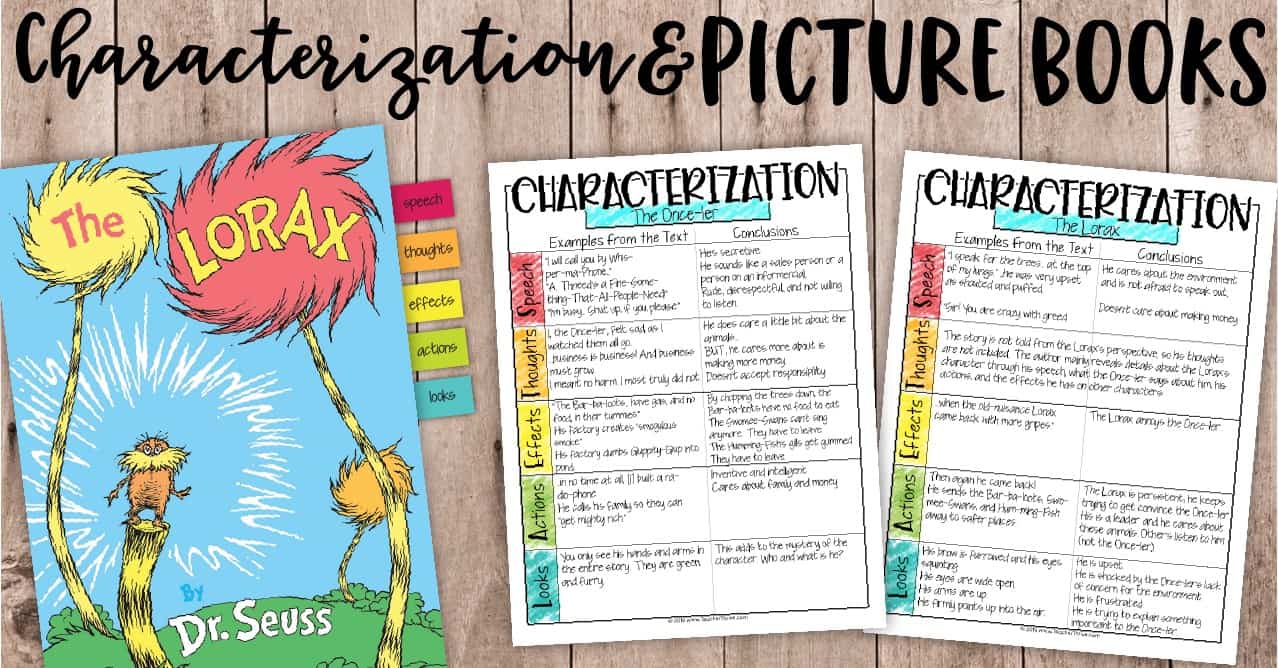
Picture books are one of the best mediums for introducing and teaching complex concepts, such as plot and characterization. Because they are concise and engaging, the present teachers with efficient opportunities for teaching. Teaching characterization using picture books illustrates this relationship perfectly. Before we can expect students to understand characterization (and eventually employ it in their own writing) in the novels the read, they need to be familiar with the methods that authors use when they write. For the example in this blog post’s free download, I used The Lorax, since it’s a picture book that is widely available and many students have already read it. However, there are countless other options that will also work.
The acronym STEAL is a popular and effective way to teach students about characterization. And this mnemonic is even more powerful when paired with a picture book!

Speech:
What does the character say?
How does he or she speak?
What do others say about the character?
Thoughts:
What does the character think?
What does the character believe?
How does the character feel?
Effects:
What effects does the character have on others?
How do others react to the character?
Actions:
What does the character do or not do?
How does the character behave?
Looks:
What does the character look like?
How does the character dress?
Describe the character’s facial expressions or body language.
Characterization Activity
First, download the free characterization mini-book and graphic organizer by entering your email address below.
- After you have reviewed the example in the free download, find a picture book that contains at least one well-developed character. I chose The Lorax because of its popularity, but I also liked that it had two very different main characters.
- Next, have your students assemble their mini-books to use during the lesson.
- Once your students have their mini-books, assign groups of students a character (if your picture book has more than one) and one of the elements from STEAL.
- While in their groups, students will read the book and find as many examples of their STEAL elements as they can.
- Finally, have each group share what they found with the whole class as students complete the graphic organizer.
The steps above are just one example. You can structure this lesson in several different ways. You can even keep it whole-group by following a Shared Reading format.
Can you think of other picture books that you could use for this lesson?









